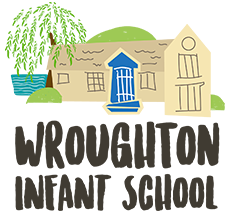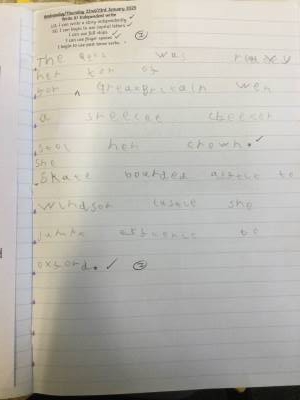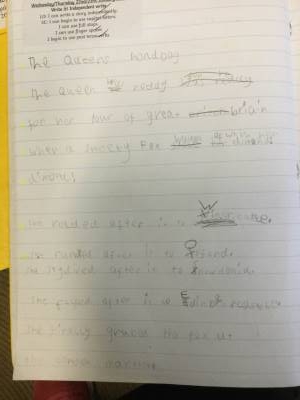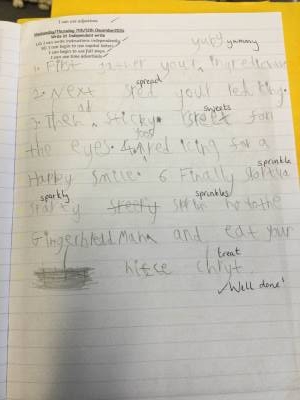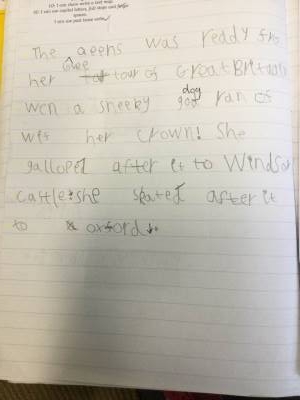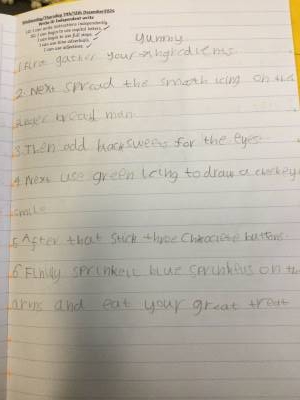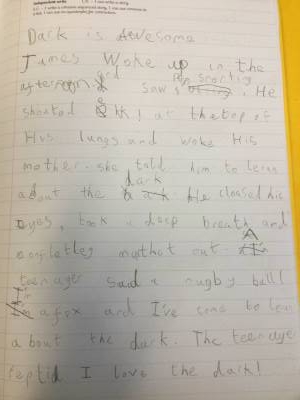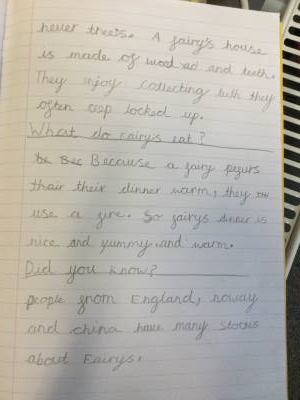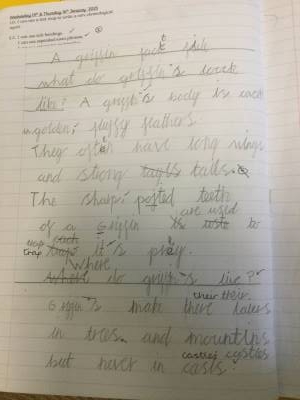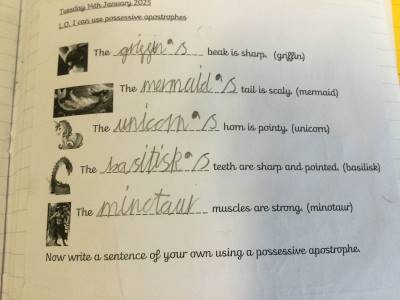Writing 
We have produced our own writing scheme based on the 'Talk for Writing' approach at Wroughton Infants School. We teach the children over a 3-week unit using a "Learn it, Change it and Write it" approach which encourages the children to innovate familiar texts. We expose the children to a variety of high quality and vocabulary rich texts to inspire their own writing and we ensure that they children are writing creatively with a purpose.

Learn it, Change it, Write it
During the 'Learn it' phase children are exposed to their new text through exciting hooks! We have had visits from the fire service, letters from authors and mysterious dragon eggs arriving in classrooms as part of this this year!
The children then learn a text map for their text and spend the week orally rehearsing this alongside creating a toolkit for their new genre.

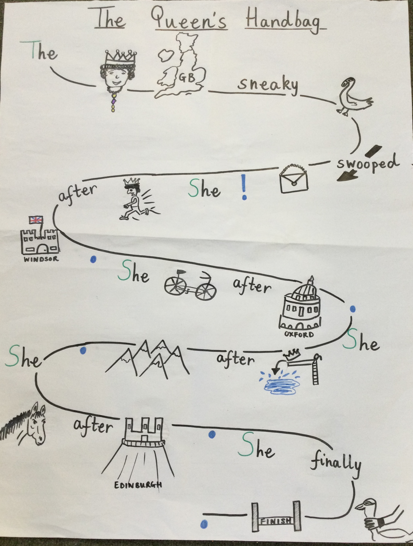
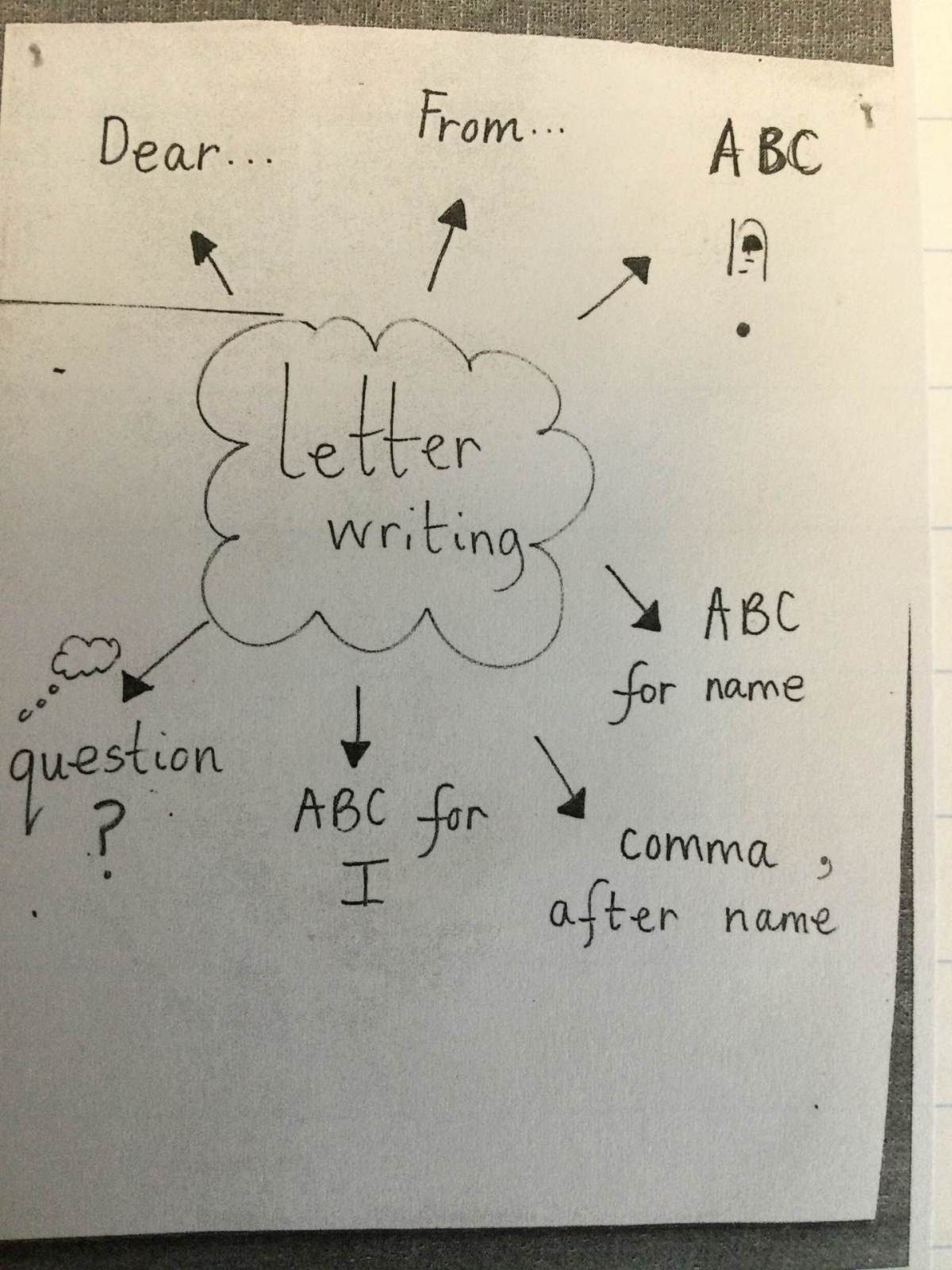
In the 'Change it' phase the children work as a class to change their text map, orally rehearse the new changes, learn new grammar and share write the text map!
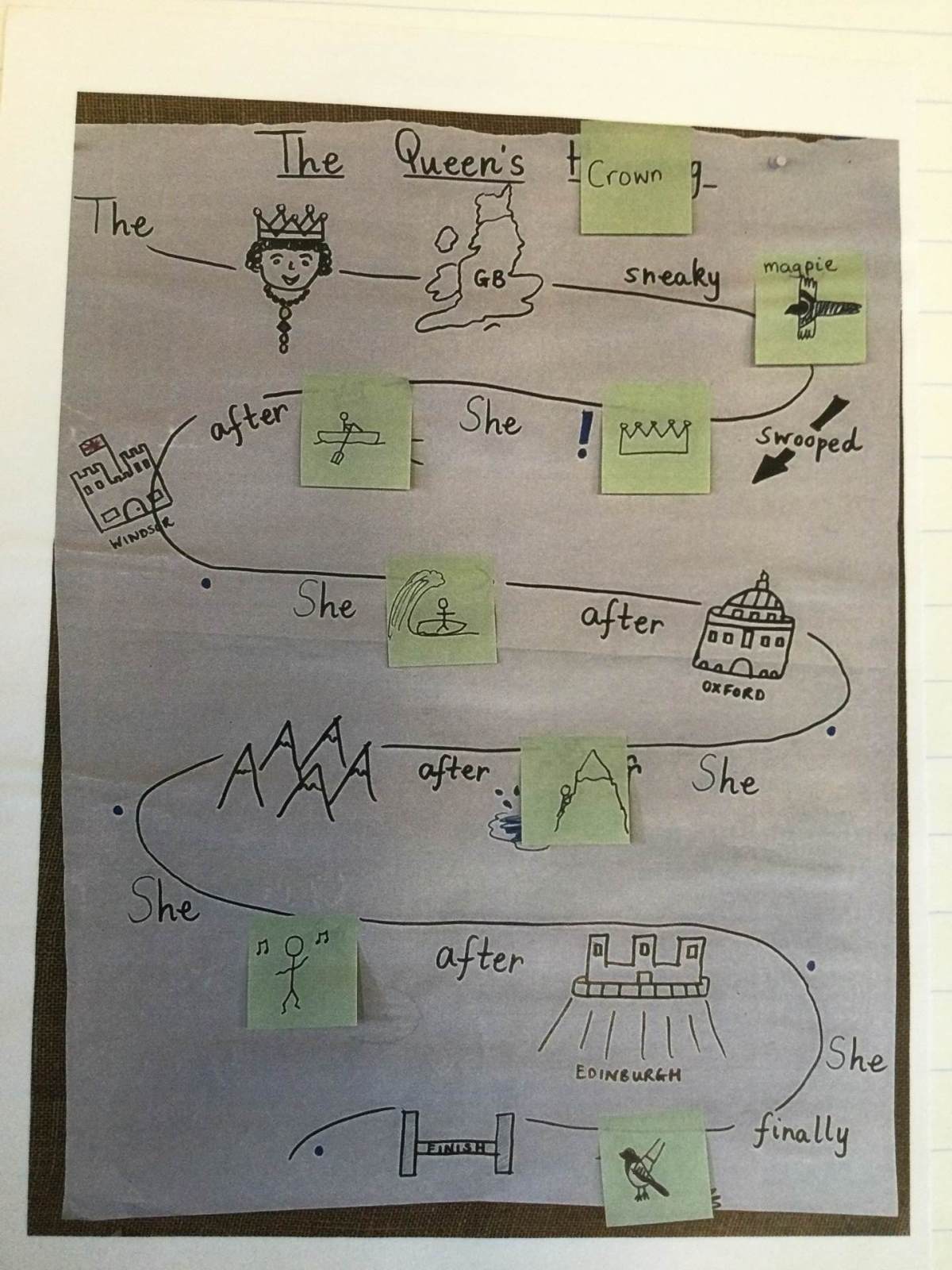
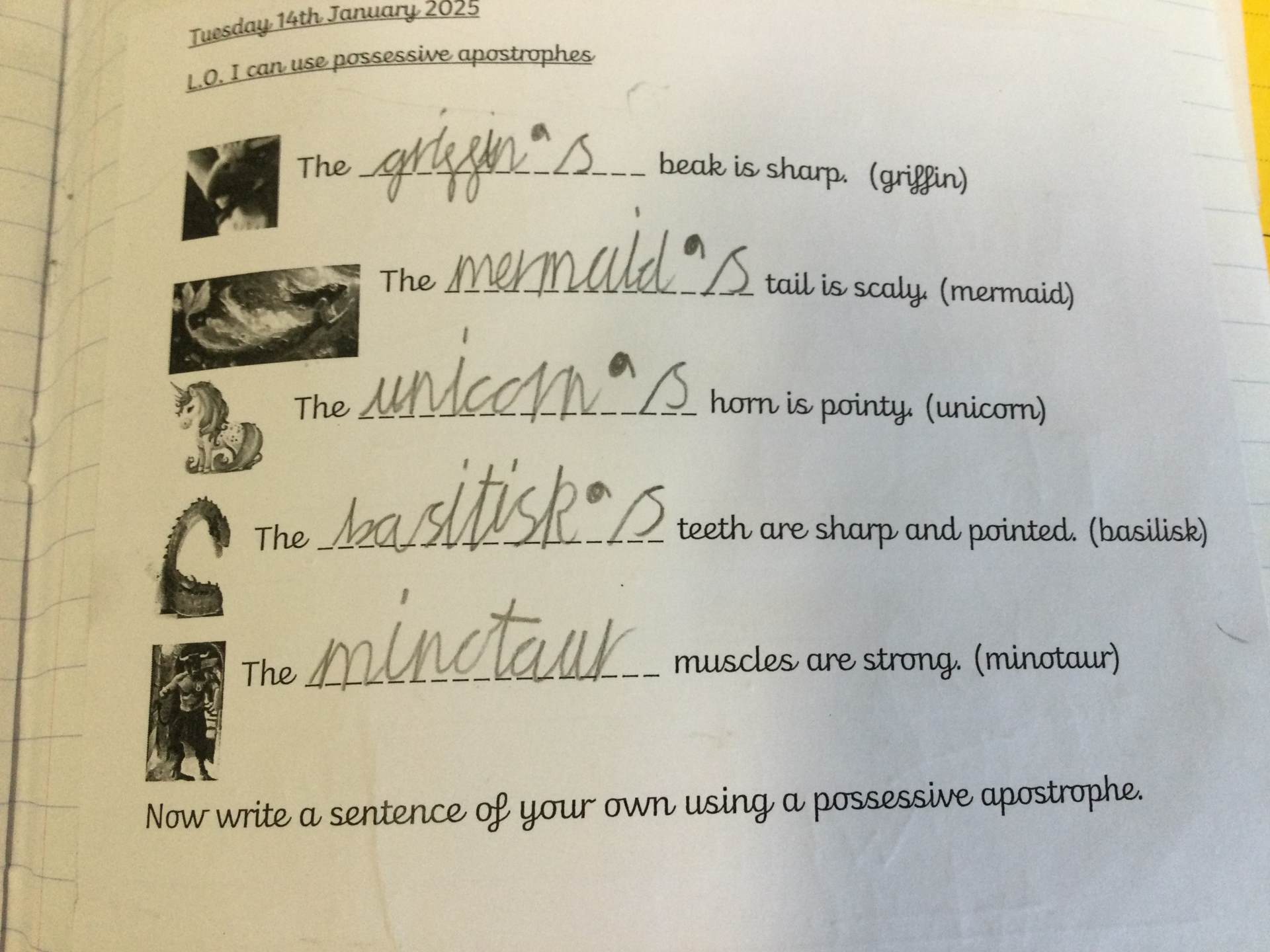
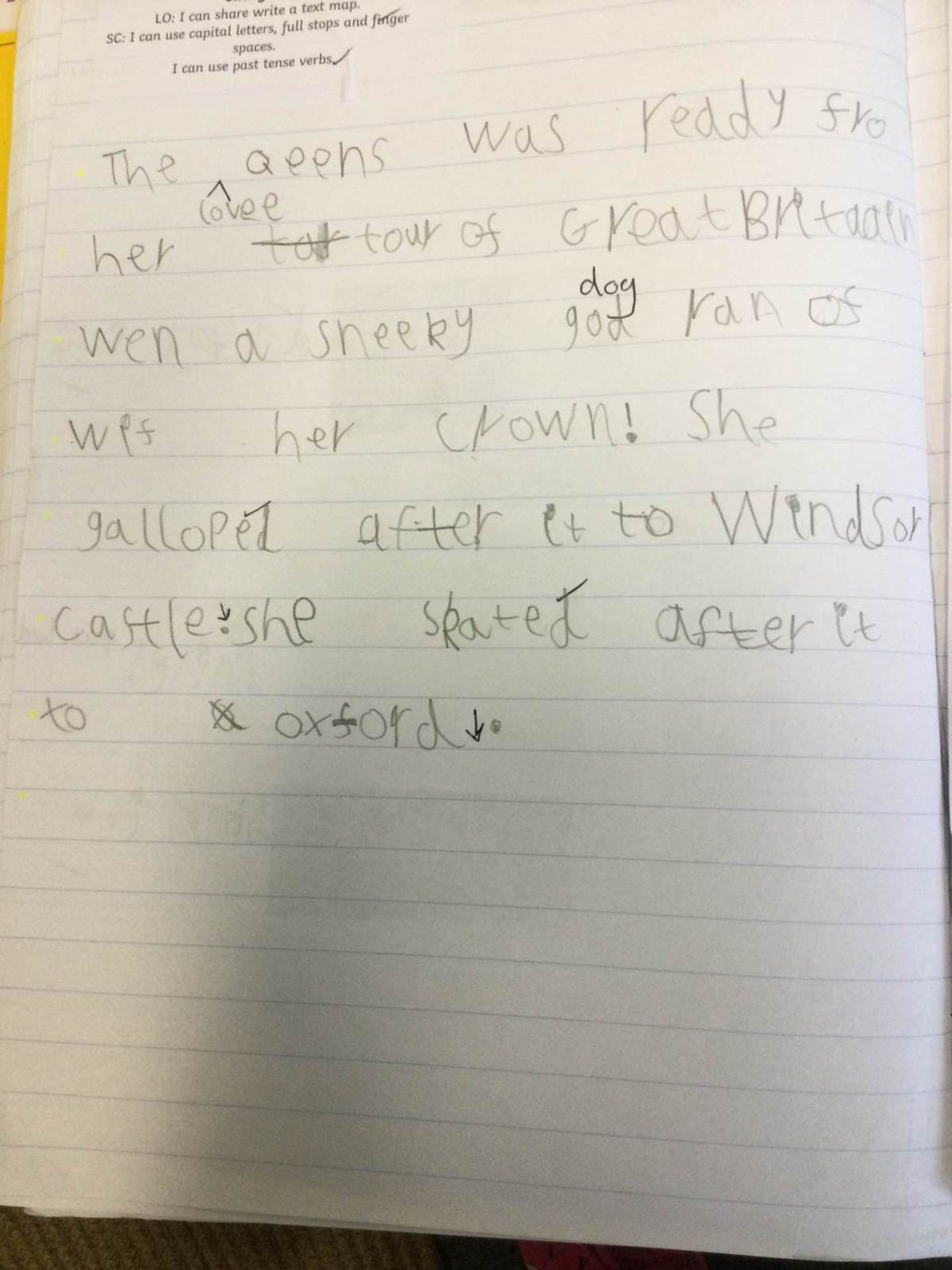
In the final 'Write it' week children can make their own changes to the text map applying all they have learned before they write it independently.
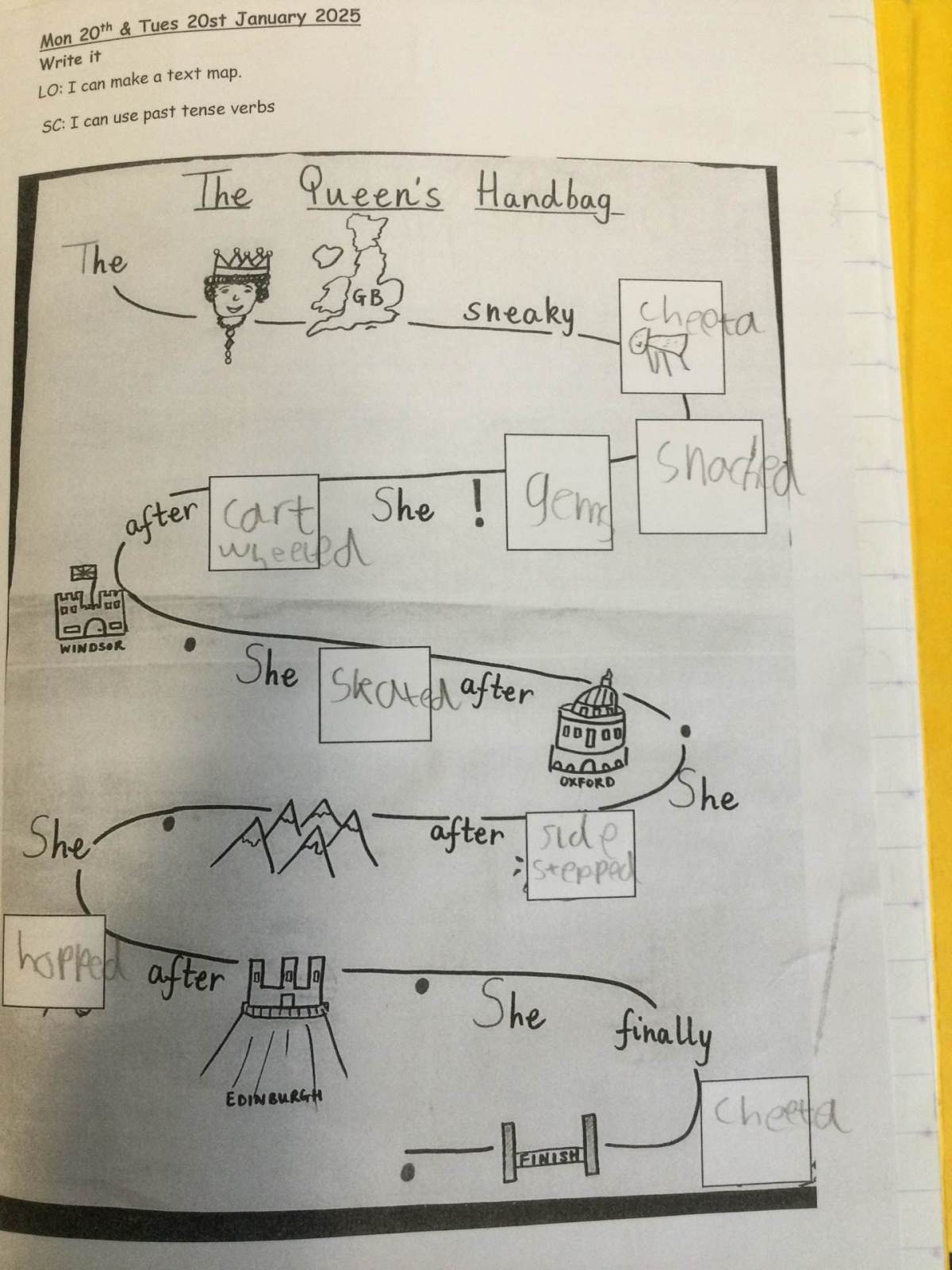
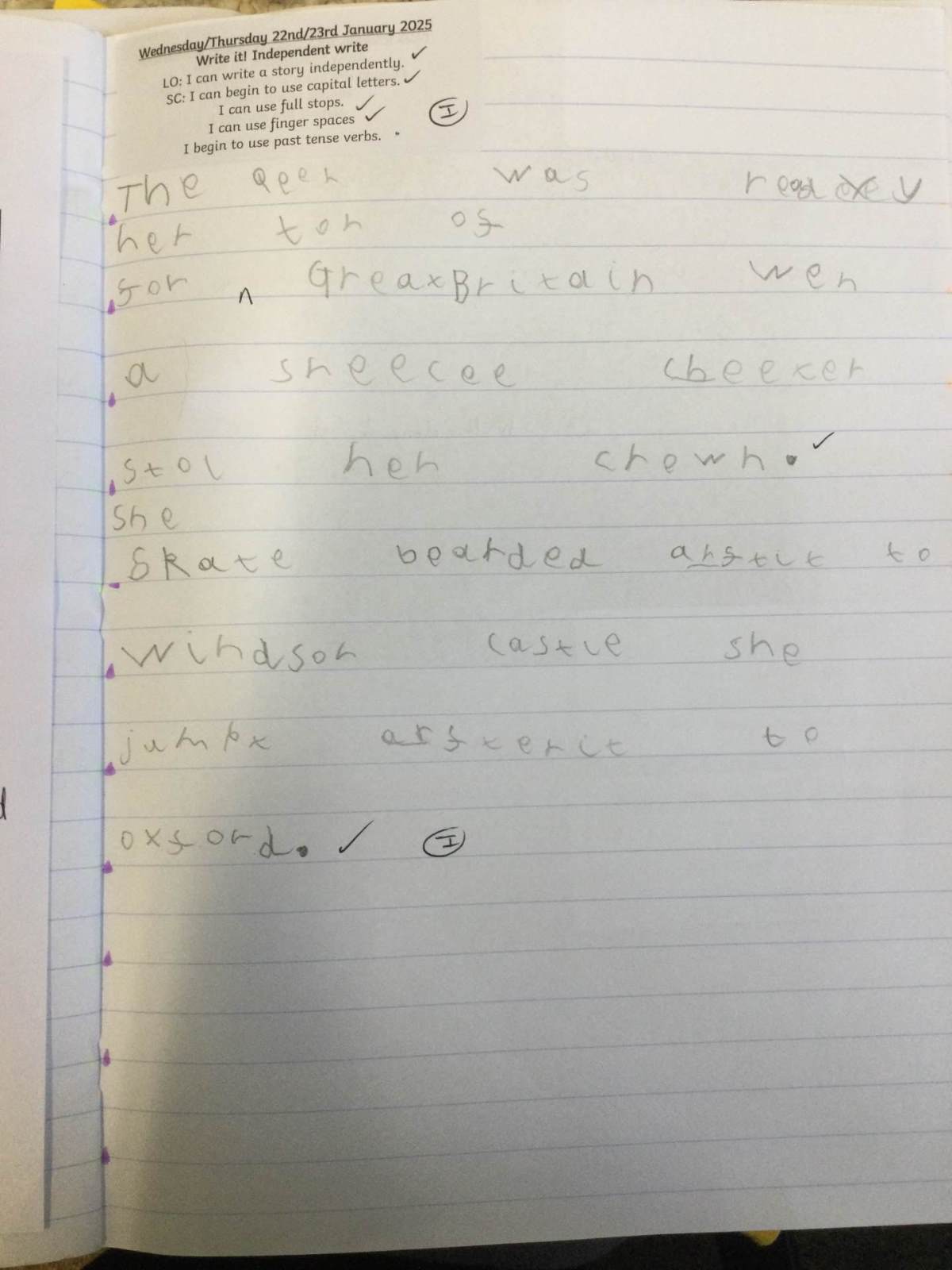
Handwriting
We follow our Phonics and Reading Scheme "Little Wandle" when teaching handwriting in EYFS and Year 1. The children are taught how to form their letters correctly and begin to learn how to keep their letters a consistent size with appropriate spaces between the words.
In Year 2 we teach the children to join their letters up and we follow our own cursive handwriting scheme as shown below. We teach children how to ensure they have clear ascenders and descenders and how to form capital letters of a relevant size to their writing. 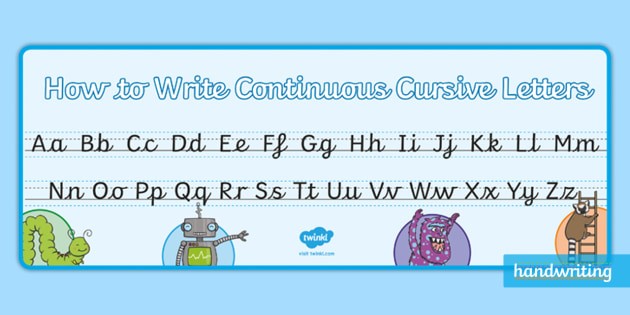
Spelling & Grammar
What is SPAG?
English grammar, punctuation and spelling is taught as a golden thread through all aspects of our English curriculum. The documents below help explain what some of the terminology is and provide lists of words that children will be taught to spell as part of the English curriculum.
Progression in Writing
Our writing units are carefully planned across the school to ensure that they are progressive, build on children's prior learning and that grammar is taught and revisited strategically.
In EYFS, keys texts are chosen to reflect the theme of the term and children's interests.


Writing in KS1
